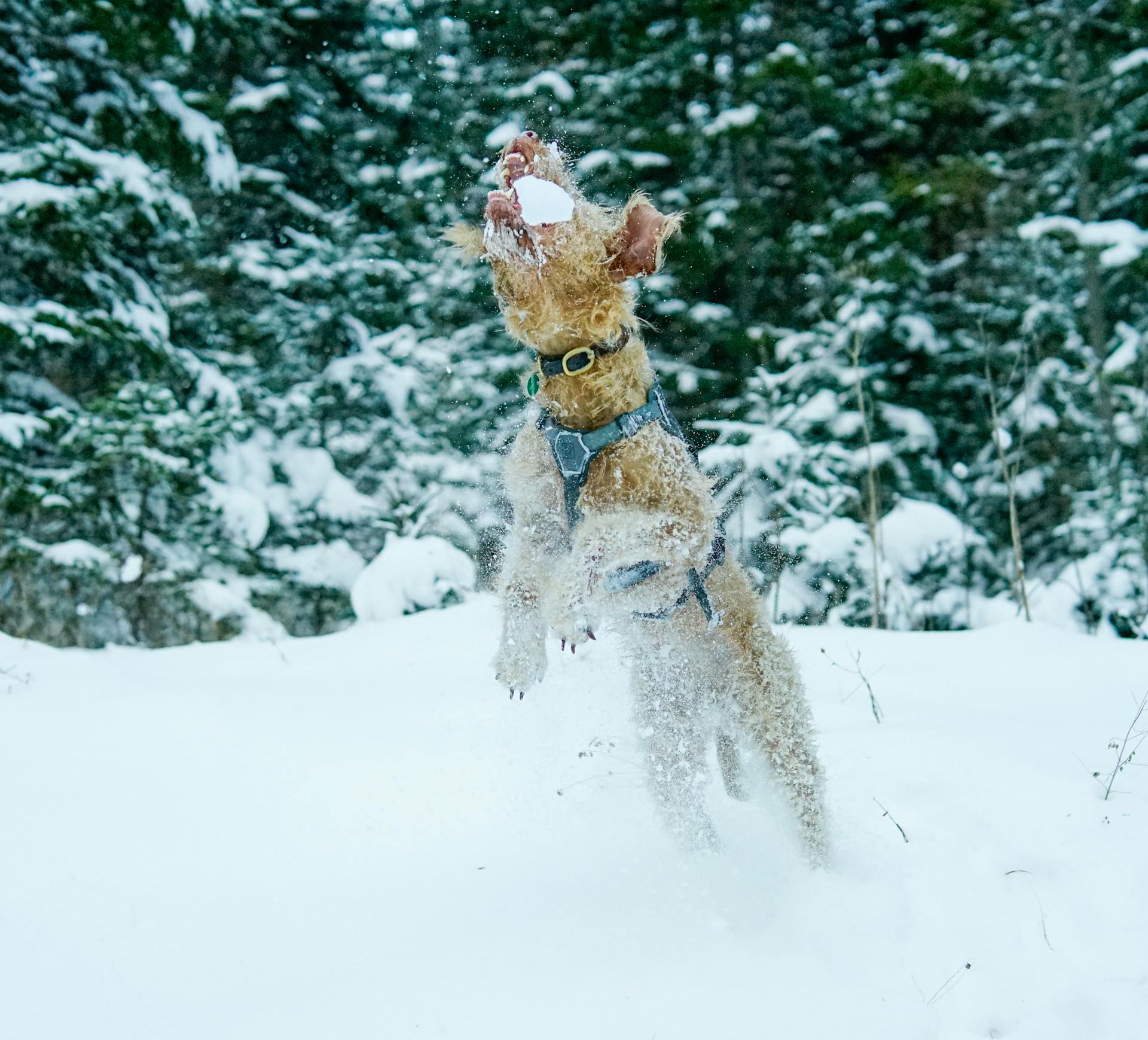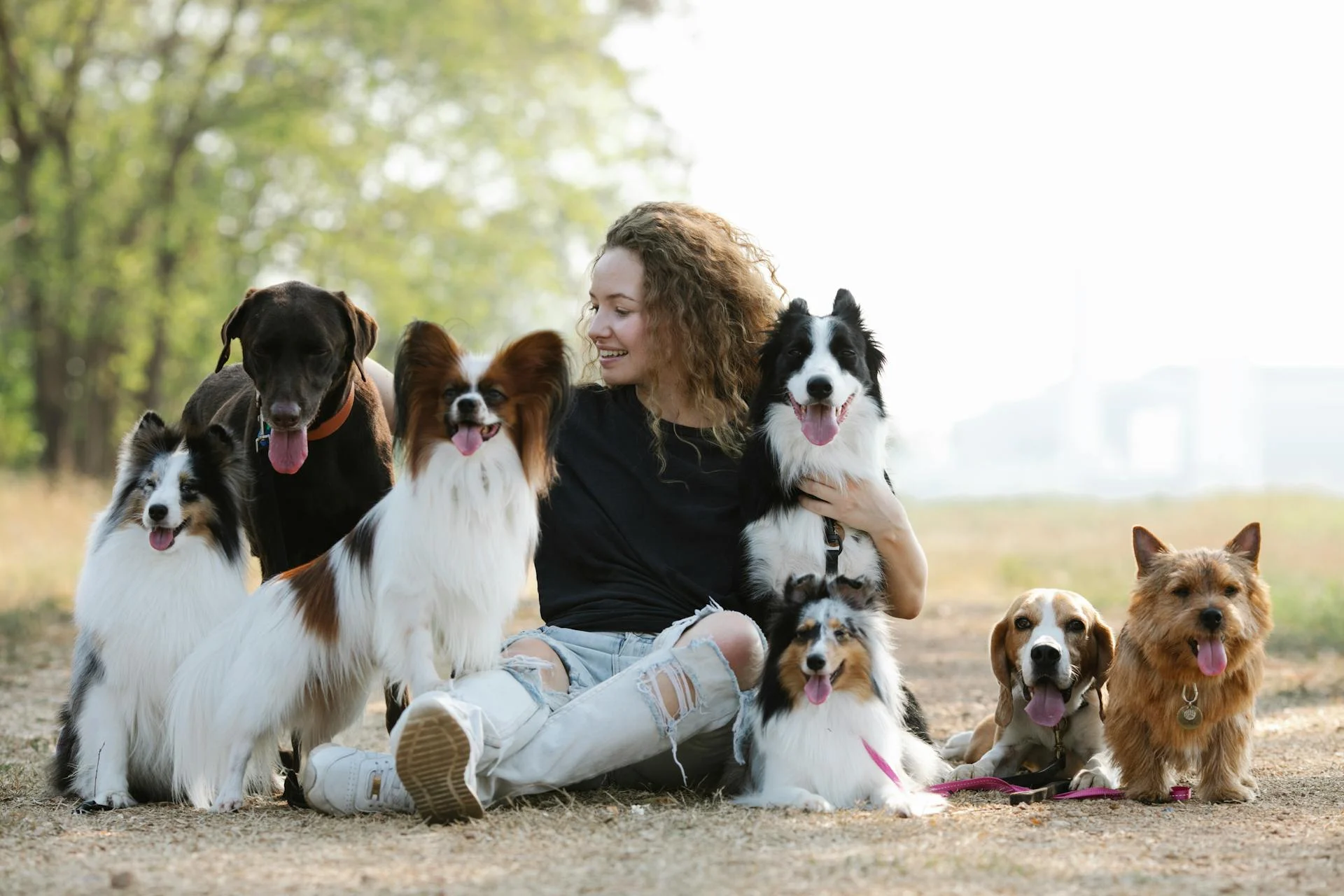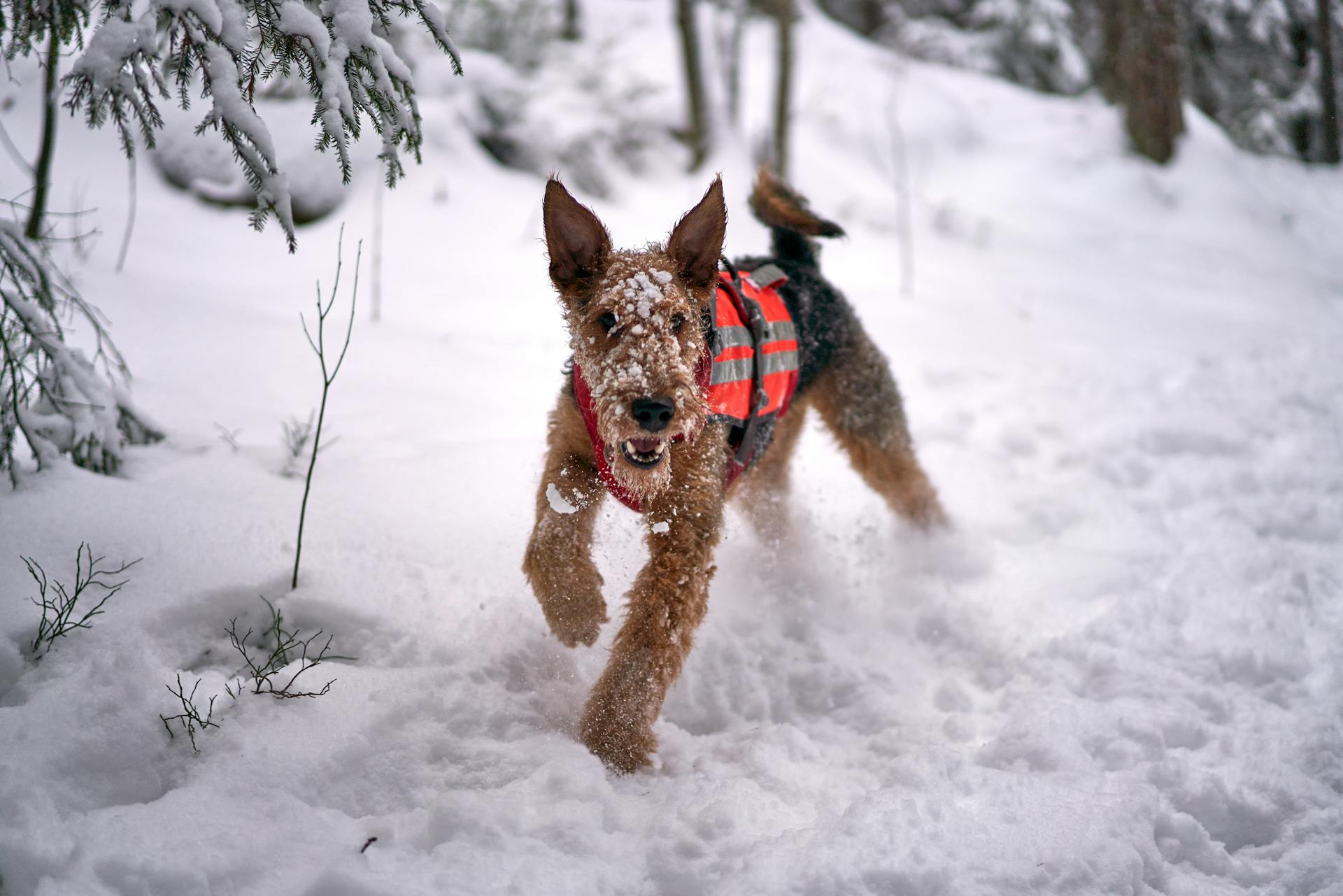
The Valencian Terrier is a rare breed with a rich history, originating in the Valencia region of Spain. They were bred to hunt small game.
Their short, easy-to-maintain coats require minimal grooming. This makes them a great choice for busy owners.
Valencian Terriers are small dogs, weighing between 7-10 kg. This compact size makes them perfect for city living.
Their energetic nature means they need regular exercise to stay happy and healthy.
Physical Characteristics
The Valencian Terrier is a small but mighty breed. They stand a little over one-third of a meter to the shoulder, which is roughly the same height as a large cat.
Their short coat is a defining feature, with the majority being white and featuring black and tan patches over the head and ears. This tricolour pattern is the most common, but other acceptable colour combinations include white and black, white and cinnamon, white and chocolate, or white and tan.
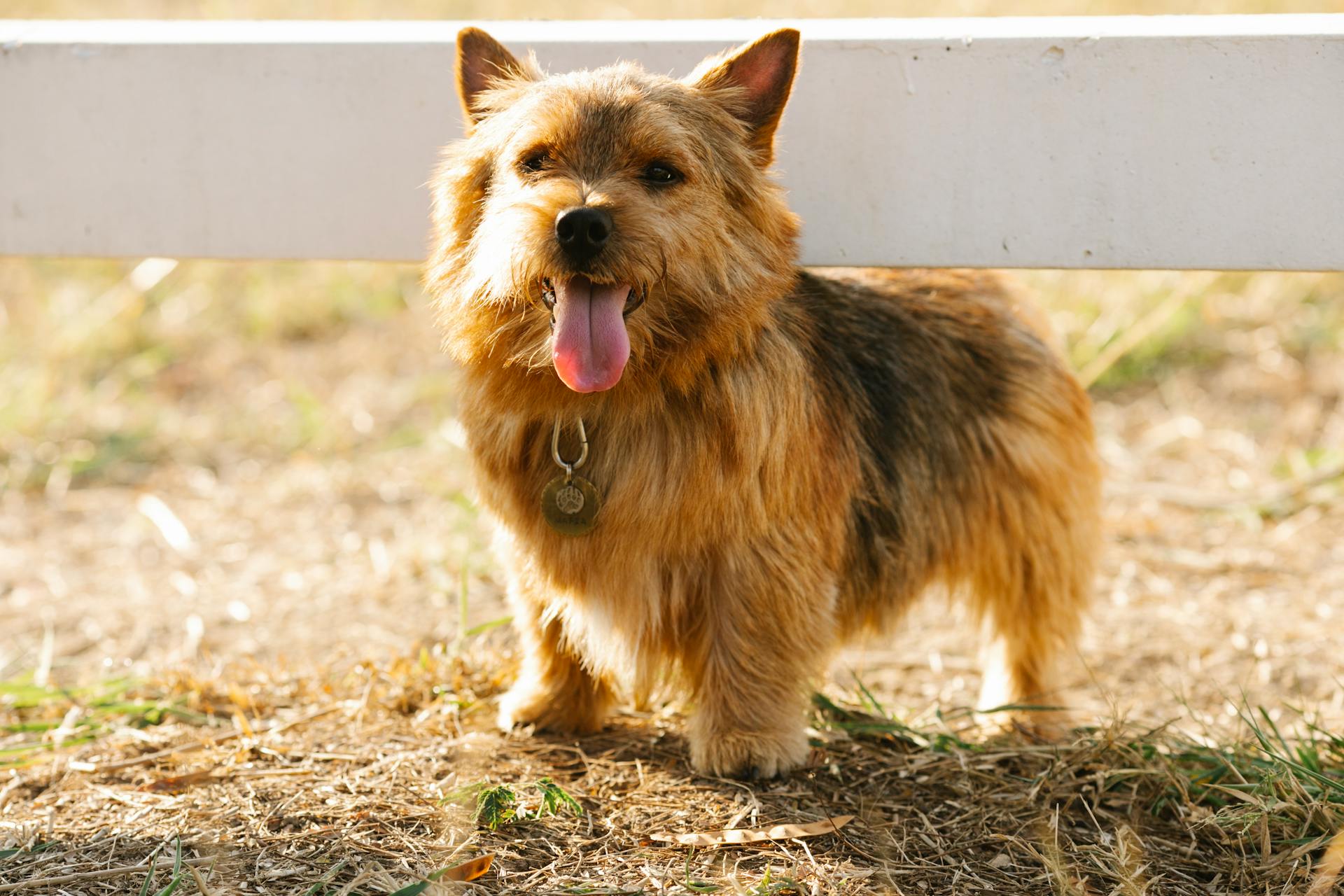
These dogs are well-proportioned, with a fox-shaped skull and a good length of leg for their body. Unfortunately, the breed standard lists them as having no tail, which can mean they are docked at birth.
The ideal size for Valencian Terriers is 36 centimetres (14 in) for males and 33 centimetres (13 in) for females, although the breed standard lists a slightly larger size range of 30–40 centimetres (12–16 in) for males and 29–38 centimetres (11–15 in) for females.
Their weight ranges from 4–8 kilograms (8.8–17.6 lb) for both males and females.
A unique perspective: 8 Week Old Yorkshire Terrier Puppy
Behavior and Temperament
The Valencian Terrier is a bold and brave dog, but this also means they can be reckless at times. They're naturally suspicious of strangers and will bark at anyone they don't know.
These dogs are excellent guardians, always ready to defend their home and family. They're also very intelligent and have been used for hunting and other tasks.
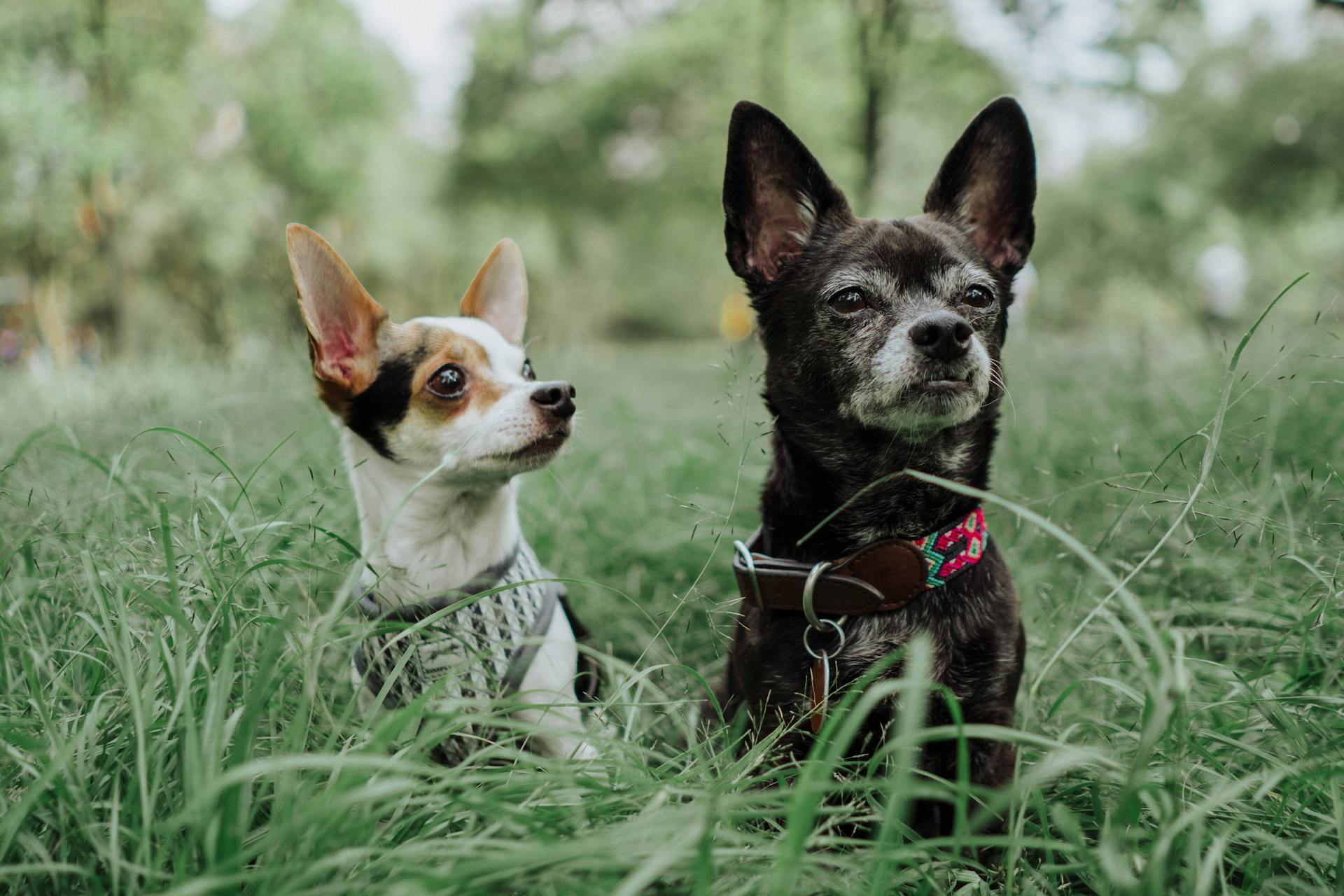
Valencian Terriers are typically energetic and need regular exercise and playtime to keep them happy and healthy. They're not suited for multi-pet households, as they have a strong prey drive and will chase small animals.
With proper training and socialization, Valencian Terriers can make great companions for children, but it's essential to supervise interactions closely. They can be unpredictable around young kids, especially if they feel anxious or fearful.
In general, Valencian Terriers are outgoing dogs that thrive with people they know well, but they can be wary of strangers and may even display aggressive behavior.
Curious to learn more? Check out: Dogs Breeds That Start with B
Care and Maintenance
The Valencian Ratter requires regular brushing to spread natural oils and remove shed hair, so aim for daily brushing.
Their short coat means they don't need frequent bathing, but a monthly bath should suffice, unless they get into the mud.
Keep an eye on their eyes, nose, mouth, paws, and ears, as these areas need regular checks.
A different take: Dog Breeds That Don't Need Grooming
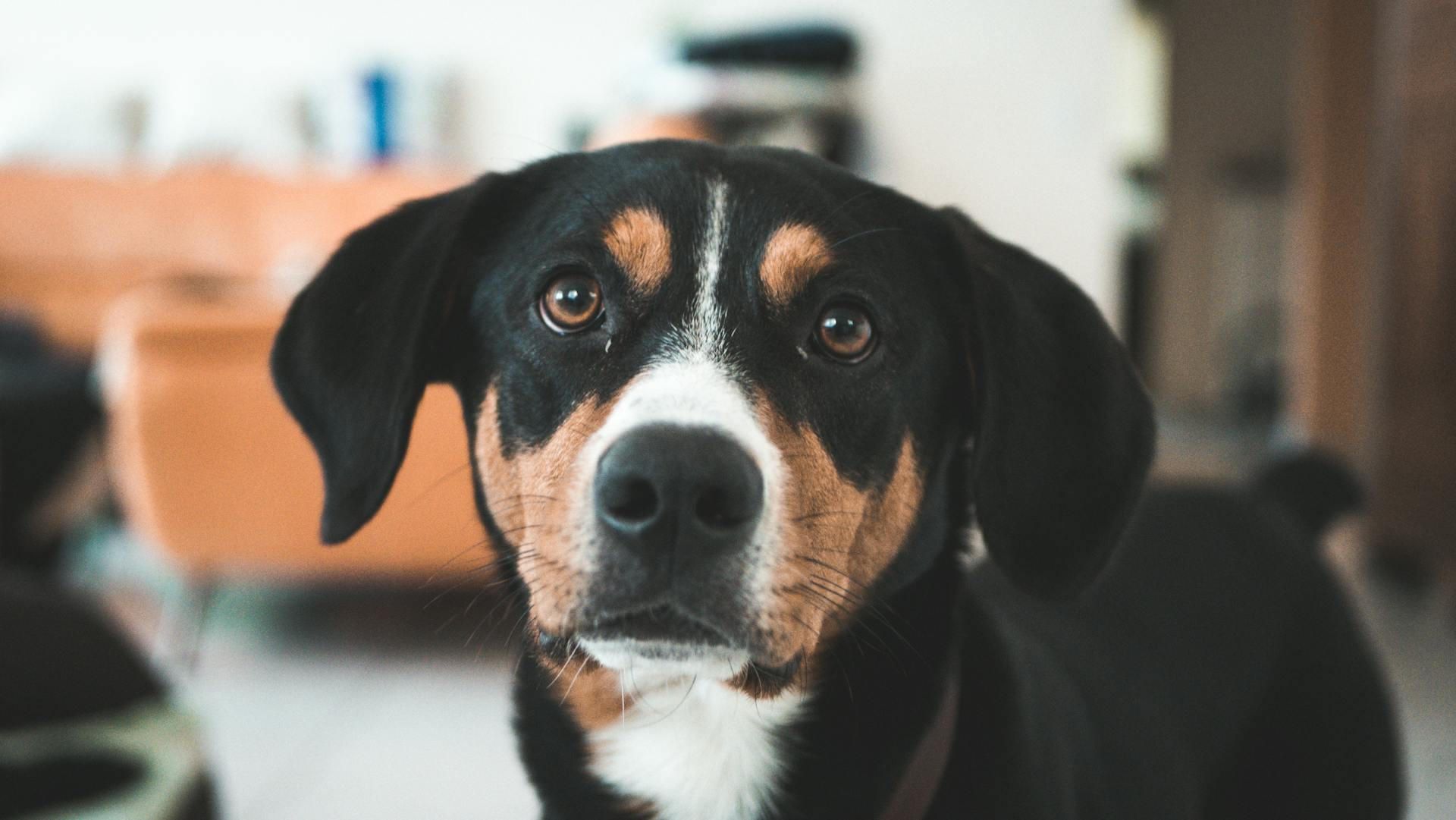
A weekly brushing can reduce the amount of loose hair, which is a plus for those who don't want to clean up after their pet.
To keep them calm and balanced, provide regular exercise, such as walks and playtime, especially if they live in a small space or urban area.
Their high energy level means they need plenty of physical and mental stimulation to prevent restlessness.
A balanced and nutritious diet is essential, taking into account their activity level and health status to avoid obesity.
Regular veterinary check-ups and following the recommended vaccination schedule are also crucial.
As a small breed, they're prone to tartar buildup, so regular dental cleaning and inspections are a must.
History and Origin
The Valencian Terrier has a rich history that dates back to the 16th century in Valencia, Spain. The breed originated from native dogs that were bred to catch rats and other rodents.
The breed's name has undergone changes over the years, with some of its previous names including "gos albellons", which translates to "perro de acequias" or "perro pequeño que sirve para ladrar a quien pasa." This name highlights the breed's role in rural areas.
You might enjoy: What Is Dog Sledding Called
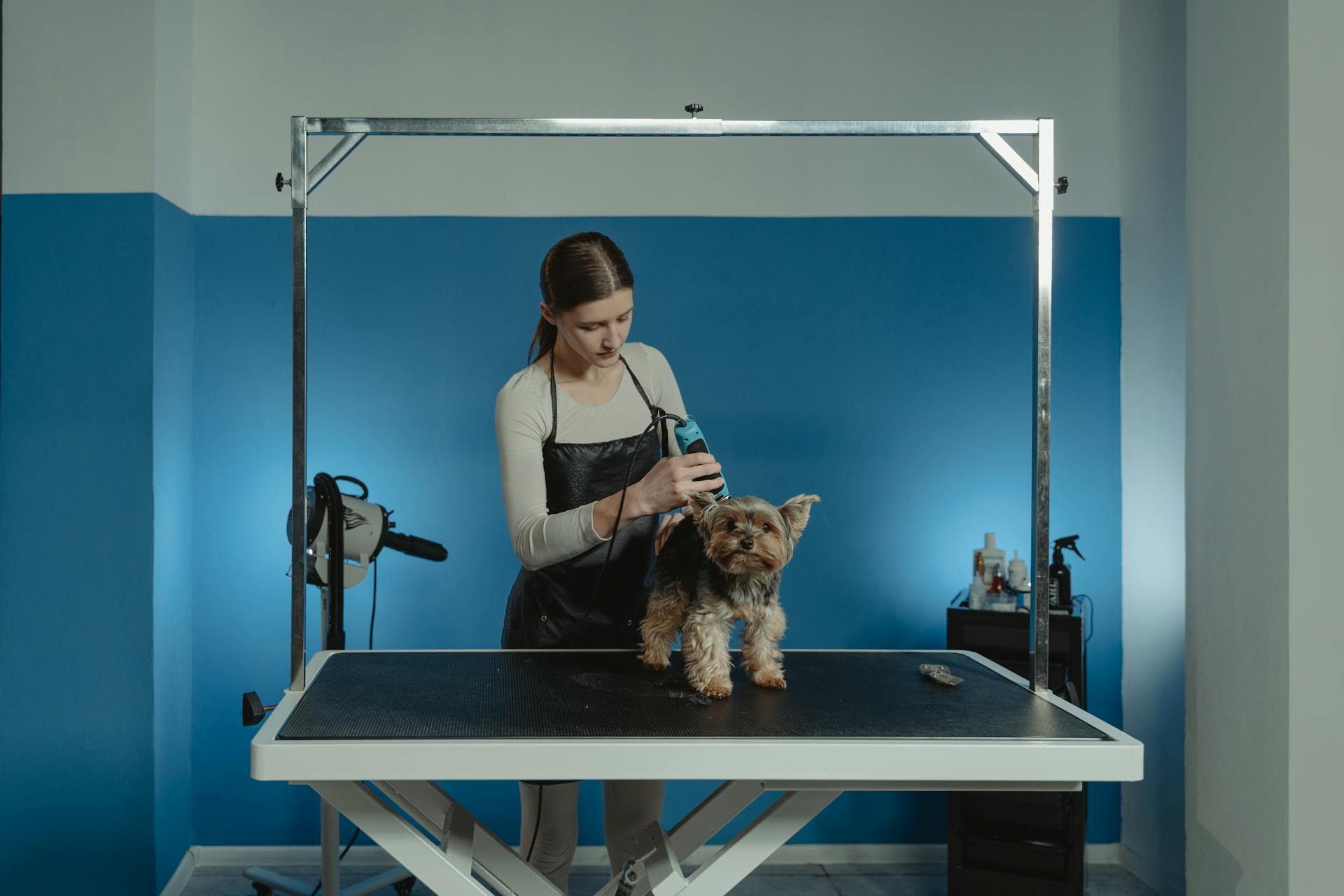
The Valencian Terrier was used for rat-catching and was particularly skilled at hunting water rats, which were highly valued in the 16th century for food. In fact, water rats were used in traditional dishes like paella.
The breed was officially recognized by the Federación Canina Española in 2004, although it had made its debut in a dog show as early as 1994.
A fresh viewpoint: Rat Terrier Killing Rats
Training and Health
The Valencian Terrier is an intelligent breed that learns quickly, but they can be free-thinkers and make their own decisions. This means they do best with an experienced owner who knows how to motivate them and keep their attention.
Reward-based training methods work well for this breed, as they respond well to being rewarded for desired actions, such as calmness in stressful situations. Old-fashioned dominance-based training techniques are not suitable, as they can lead to anxiety and make the dog unpredictable around strangers.
To keep your Valencian Terrier stimulated mentally and physically, consider enrolling them in agility training or other activities that challenge their speed, agility, and docility. This can help prevent them from becoming hyperactive, stressed, or anxious.
Some potential health issues to watch out for in the Valencian Terrier include hip dysplasia, elbow dysplasia, Von Willebrand's disease, and hypothyroidism. Regular veterinary check-ups and preventative care can help detect these issues early on.
For another approach, see: Border Collie Agility Dogs
Erziehung & Training
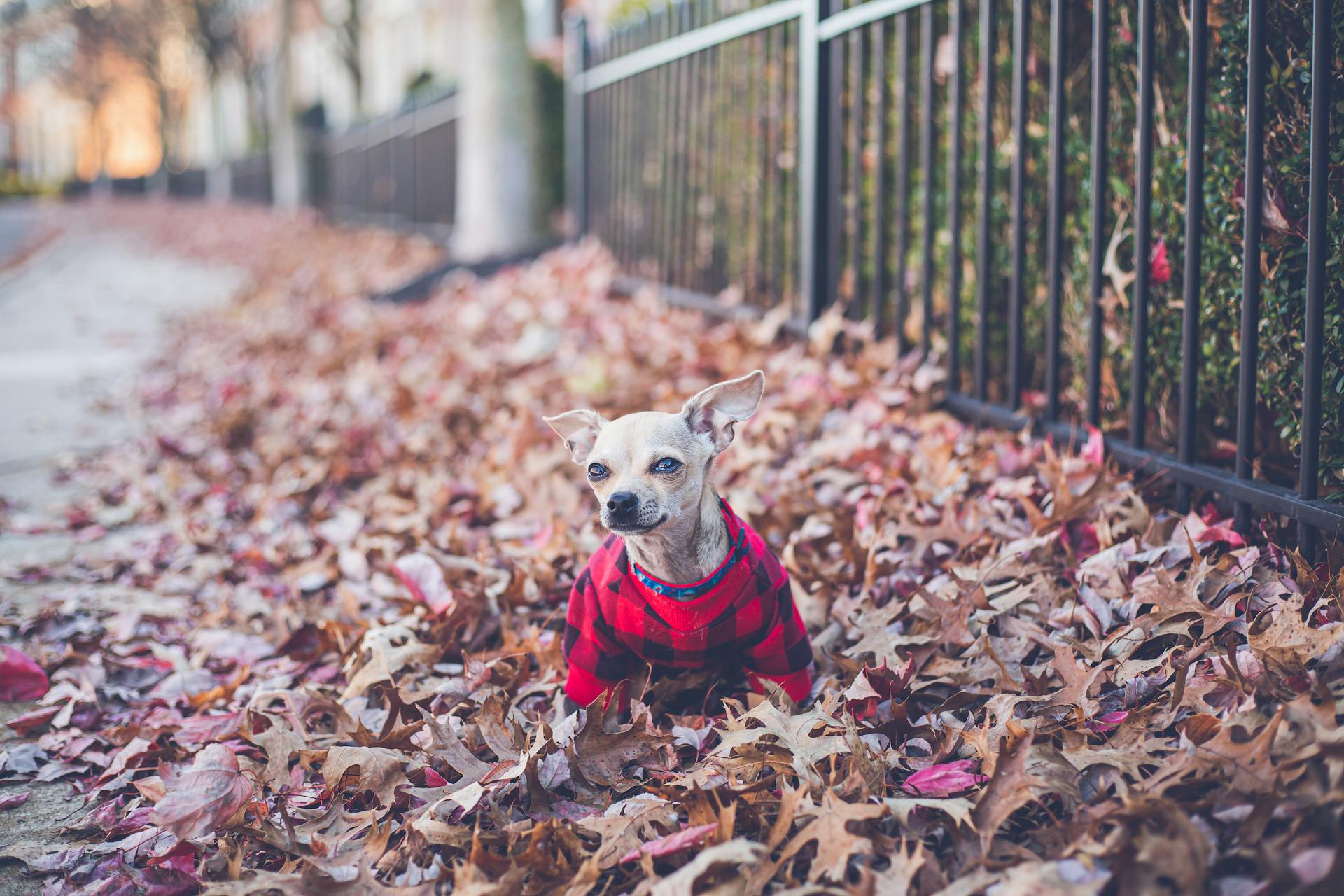
The Valencian Ratter is an intelligent breed that learns quickly, but they're also free thinkers that require an experienced owner who knows how to motivate them.
They respond well to reward-based training methods, which teach the dog desired behaviors like calmness in stressful situations.
Old-fashioned dominance-based training techniques are totally inappropriate for this breed, as they're based on fear and can lead to anxiety and biting.
To keep your Valencian Ratter stimulated mentally and physically, consider enrolling them in agility training or other activities that challenge their speed and agility.
This breed can be marcadamente territoriales, so introducing a new dog to the household requires careful planning to avoid conflicts and potential vet visits.
Socializing your Valencian Ratter correctly is essential to prevent problems like territorial behavior and to keep them balanced.
Using positive reinforcement techniques, you can easily teach your Valencian Ratter basic obedience commands, but remember to avoid castigos and gritos, as they're ineffective and can cause more harm than good.
A different take: Pembroke Welsh Corgi Agility
Salud
The health of your ratonero valenciano is crucial to their overall well-being. These dogs are generally very strong, but like any breed, they can be prone to certain health issues.
One thing to watch out for is hypothermia, especially in cold weather, due to their short and sparse coat. This makes them more susceptible to cold temperatures.
The ratonero valenciano can be prone to hereditary health issues, including hip dysplasia, elbow dysplasia, Von Willebrand's disease, and hypothyroidism. Regular veterinary check-ups and preventative care are essential to detect these conditions early on.
To keep your ratonero valenciano healthy, it's essential to follow a correct preventative medicine plan, as recommended by your veterinarian.
Here are some common health issues to be aware of in ratoneros valencianos:
- Displasia de cadera o de codo
- Enfermedad de Von Willebrand
- Hipotiroidismo
Frequently Asked Questions
What Spanish dog looks like a Jack Russell?
The Ratonero Bodeguero Andaluz, also known as the Spanish Jack Russell, is a small and agile dog breed with a lively personality. This energetic breed is known for its intelligence and versatility, making it a fascinating companion.
Sources
- https://www.dogzone.com/breeds/gos-rater-valencia/
- https://www.expertoanimal.com/razas-de-perros/ratonero-valenciano-o-gos-rater-valencia.html
- https://en.wikipedia.org/wiki/Valencian_Terrier
- https://www.milouchouchou.com/en/all-known-canids/the-fci-breeds
- https://dogondo.de/de/rassen/ratonero-valenciano
Featured Images: pexels.com
